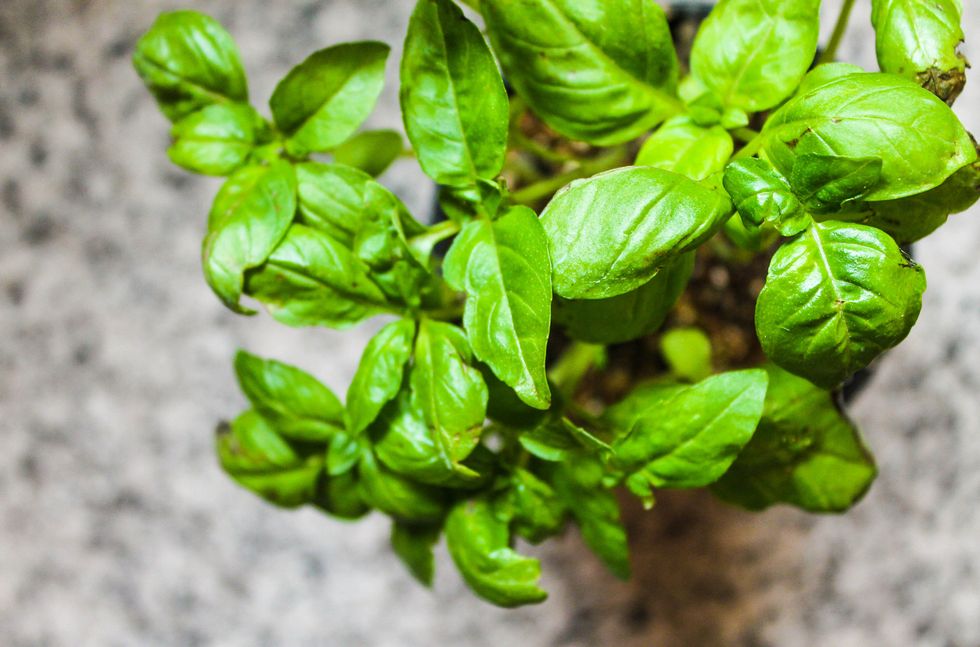
It has anti-inflammatory properties and regulates pressure. Let's find out why basil is good for health. Plus we give you a chef's recipe!
Its name means “royal and majestic plant" and with good reason, because thanks to this specimen belonging to the Lamiaceae family, dinners can be prepared like a king. It is basil , one of the most popular herbs in the kitchen; first of all because it forms the basis of the infamous pesto , loved by us Italians and then because it is able to enrich any type of dish, from the classic tomato sauce to many other preparations. And, not just an added value, at the same time it boasts numerous virtues.
As specified by Dr. Raffaella Melani , nutritionist biologist "It is rich in Vitamin A and Vitamin C, mineral salts, flavonoids and antioxidants, useful for protecting the body from aging and to counteract the action of free radicals, allowing optimal functioning of the organism. Furthermore, due to the high concentration of potassium it acts on the regulation of blood pressure and is particularly suitable for sportsmen's diet . Its essential oils , namely eugenol, camphor and linalool give it antiseptic and anti-inflammatory properties . It also contains Ursolic Acid, a "fat burning" substance because it is able to convert white fat into brown fat ". The essential oil and hydroalcoholic extract then boast sedative and relaxing effects .
But basil has another very important action, as Dr. Melani tells us, the antitumor effect on breast cancer cells. In fact, it seems that some substances contained in the plant, such as estragole, are able to induce apoptosis in cancer cells. Stresses Melani “The only factor of attention must be the age of the plant. In fact, in the Biotechnology Center of Genoa it was discovered that young basil seedlings, less than 8-10 centimeters high, may contain methyl-eugenol, a carcinogenic substance for which there are intake limits set by American and European laws. With the maturation of the plant, methyl transforms into eugenol which is not only harmless, but even gives basil anti-inflammatory properties ". The only subjects who necessarily have to limit their consumption are those who suffer from kidney stones , due to the quantity of oxalates. And pregnant women for toxoplasmosis risk. In fact, basil should be consumed naturally, because treated does not preserve its properties and can become dangerous.
Due to its versatility it is a very popular herb also by the masters of haute cuisine, such as Felix Lo Basso , owner of the Felix Lo Basso Restaurant and from Puglia, who, as he says, has it in his DNA. “ Basil reminds me of my childhood, my mother's and grandmother's Apulian cuisine, the sun and the sea, which is why I use it very often in my dishes. It can be used in the form of cream , as a complement to other dishes / dishes or for example in the form of sour butter , or ice cream , as in the tortelli that I have included in my menu, with ricotta and anduja, scampi and tomato water. Thanks to its delicate and pleasant taste, it goes well with all types of flavors , including the more decisive ones, such as anduja. I also like it in the form of oil , to accompany, for example, the "spaghetti in the oven" with tomato or even in combination with risotto ".
And if you have eaten too much, you can always prepare an infusion , excellent for calming gastric spasms. 3 tablespoons of basil leaves are enough to infuse in 300 ml of boiling water for 30 min. Filter and drink: you will be as good as new.
Basil tortelli with ricotta and nduja, scampi and tomato water by Felix Lo Basso
Ingredients:
200 g flour 00
100 g semolina
300 g fresh basil
30 g pine nuts
5 g extra virgin olive oil
25 g parmesan
6 g fine salt
10 egg yolks
180 g buffalo ricotta
20 g nduja
1 pinch of salt
1 grated lemon peel
500 g cherry tomato
4 scampi
Prepare the pasta: put the toasted pine nuts, basil, parmesan and oil in the mixer. Lower the temperature and mix until you get a homogeneous pesto.
Then in a mixer put the flour, egg yolks and pesto. Work the dough until it is homogeneous, finally add the salt and continue to knead for 2 minutes. Then let the dough rest in the fridge for a few hours.
Prepare the filling by mixing the ricotta, the anduja with a pinch of salt and the lemon peel, then transferring them to a pastry bag. Prepare the tomato water. Shell the prawns, and leave the prawn eggs to dry at 65 degrees for 4 hours.
Blend the cherry tomatoes raw then transfer them to a colander lined with a cloth to filter. Close the cloth and drain the water only for a few hours in the fridge.
Composition: roll out the very thin dough in the dough sheeter, with the help of a pastry cutter, make some discs, where the ricotta and nduja will be placed with the help of a pastry bag. Close the tortelli by pressing the edges and brush with the beaten egg yolk. After making the tortelli, boil them in boiling salted water, drain them and arrange them on plates. Complete with the tomato water (previously adjusted with salt), the diced raw scampi with its eggs and decorate everything with basil sprouts.







